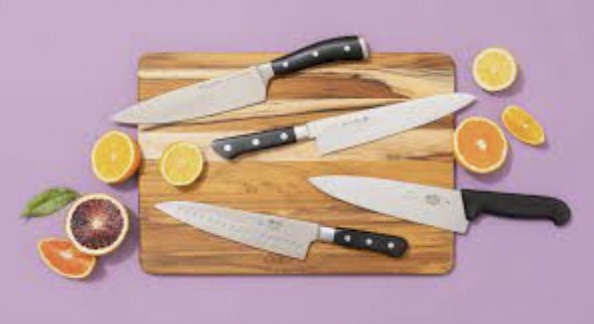Choosing the best knives can be a challenging task, especially with the numerous options available in the market. From chefs to paring knives, various types serve different purposes in the kitchen. However, selecting the right knife is crucial as it can significantly impact your cooking experience. This guide will discuss the factors to consider when choosing the best kitchen knives.
The following are the essential items you need to be aware of:
Type of Knife
Before choosing kitchen knives, you must identify the type that best suits your needs. For instance, a butcher knife would be ideal if you frequently cook meat, while a bread knife would be best suited for cutting bread. Additionally, consider investing in a chef’s knife as it is versatile and used for various tasks such as chopping vegetables and slicing meat. When choosing one, it’s crucial to select an appropriate knife for the task at hand. By considering the type, you can ensure you have the right tool for the job.
Blade Material
Different blade materials offer different levels of durability, sharpness, and resistance to rust and corrosion. Blades are commonly made from stainless steel, carbon steel, or ceramic materials. Stainless steel is known for its durability and low-maintenance upkeep, whereas carbon steel offers sharper edges but requires more attention. Ceramic blades are popular for their lightweight and razor-sharp edges, but they can be fragile and prone to chipping or breaking. The blade material not only affects the durability and sharpness of the knife but also impacts its maintenance. Selecting a blade material that suits your needs and fits your maintenance routine is essential.
Blade Size
The size of the blade is another crucial factor to consider. Blade sizes typically range from 3 inches to 12 inches. A smaller blade size is ideal for precision cutting, such as peeling vegetables. A larger blade size is better suited for chopping more oversized items, such as meat and vegetables. Additionally, consider the size of your hands and the amount of control you have over the knife. The blade size can impact the level of control over the knife and the comfort of the grip. Choosing a blade size that is comfortable for you and allows you to perform the task effectively is essential.
Handle Material
The handle material is an essential factor to consider as it determines the grip and comfort of the knife. The handle material of a knife is essential for comfort and grip. Wooden handles offer a traditional look but require maintenance. Plastic handles are lightweight and easy to clean, while metal handles are durable but may need to be more comfortable. The choice depends on personal preference and intended use. Choosing a handle material that is comfortable to hold and provides a sturdy grip is essential.
Price
Lastly, it would be best if you considered the knife’s price. Kitchen knives can range from a few dollars to several hundred dollars, depending on the quality and brand. While investing in a high-quality knife is recommended, choosing a knife that fits your budget is essential. Consider purchasing a set of different types at a lower price. While investing in a high-quality piece is recommended, finding a balance between quality and affordability is essential. Choosing one that fits your budget and needs can ensure you have a reliable tool in your kitchen.
Conclusion
In conclusion, choosing the best kitchen knife requires careful consideration of several factors, including the type of knife, blade material, blade size, handle material, and price. Investing in a knife that fits your needs and budget and offers a comfortable grip and ease of use is essential. Following the factors discussed in this guide, you can find the perfect kitchen knife for your culinary needs.

